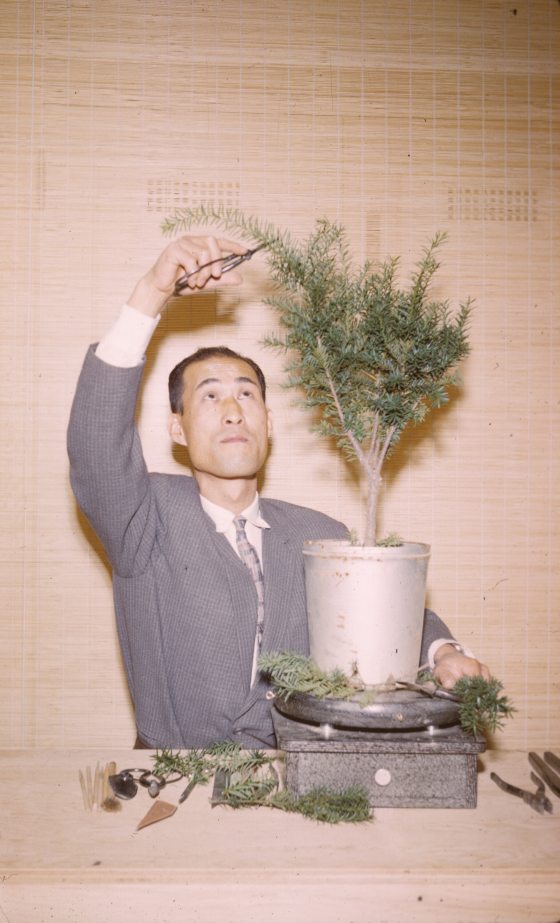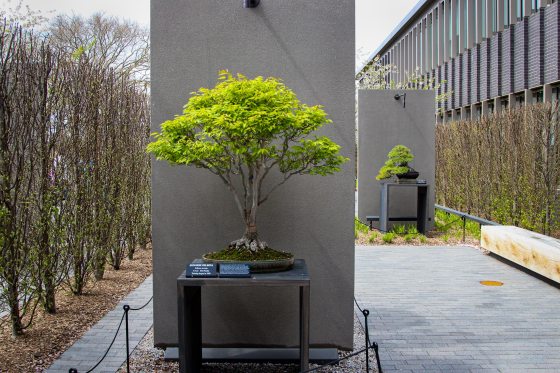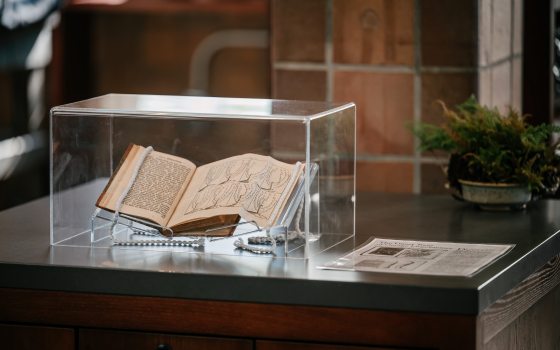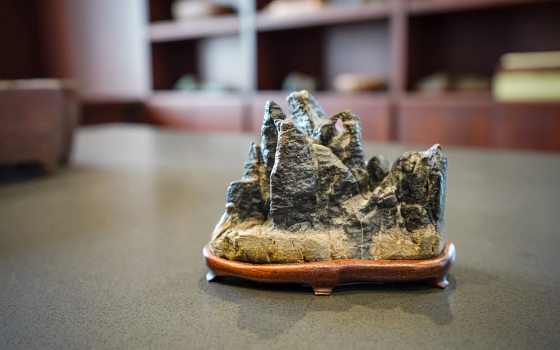The bonsai collection at Longwood Gardens originated in 1959, but the history of the art form of bonsai goes back many centuries in Japan and China. Longwood’s world-class collection has grown from 13 trees in 1959 to almost 200 today, including selections of great rarity and beauty from The Kennett Collection. In our contemplative Bonsai Courtyard, guests can enjoy a rotating display of up to 50 to 60 specimens, with each season bringing new discoveries and new beauty. Bonsai was not generally known in the western world outside of Asia until the early twentieth century, but the Longwood Gardens Library recently acquired a nearly 300-year-old rare book that perhaps challenges that notion, offers an interesting connection to one of our bonsai collection’s four original trees, and adds to the intrigue of this amazing art form.
Bonsai is the Japanese art of growing and shaping miniature trees in containers to suggest mature tree forms found in nature. Bonsai are not special miniature varieties; they are genetically and biologically identical to full-sized trees and their miniature size is the result of training. Flowering and fruiting bonsai trees bear full-size flowers and fruit.

Longwood’s Punica granatum (pomegranate) bonsai bears full-size fruit. Photo by Pat Quattrone.
Georg Liegelsteiner was a gardener in the court of Versailles who later became Director of the Episcopal Gardens in Salzburg, Austria. He specialized in training and pruning of dwarf trees and wrote a book in 1702 about training and pruning dwarf fruit trees. According to Pomona's Harvest: An Illustrated Chronicle of Antiquarian Fruit Literature (Timber Press, 1996), Liegelsteiner’s book became popular throughout Europe and his method of getting fruit from dwarfed trees became quite fashionable. The book was apparently reprinted and given various titles by different publishers in subsequent years.
Walter Pall, a German bonsai specialist, describes in a 2000 issue of Bonsai Magazine first hearing about Liegelsteiner’s book from an Austrian bonsai grower: “Browsing in a store for antique books he saw something entitled The Well Scrutinised Dwarf Tree [Wohlgezogener zwerg-baum in German] ... Liegelsteiner describes in amazing detail how to create dwarf trees which look just like big ones which will bloom and fruit as well. He writes of how to cut roots and make them bud back and develop a dense root ball…his ideal was what we today would call an ‘informal broom style.’”
Pall goes on to say that despite the trees not specifically discussed as being in containers, Liegelsteiner’s technique and drawings describe “exactly how to create something that we know as bonsai today … his descriptions can easily compare to contemporary Chinese and Japanese literature.” It is a mystery where Liegelsteiner obtained his knowledge—if it was from his own travels, from travelers passing through Europe, or if he learned the techniques himself through experimentation.

Fold-out illustration from Liegelsteiner’s book showing what we would call today his “informal broom style” pruning technique.
The Longwood Gardens Library obtained a 1747 edition of Liegelsteiner’s book in 2024. It has been added to our rare book collection, which started with our founder Pierre du Pont’s beautifully illustrated collection of books on botany, horticulture, and garden design. Even though our bonsai plant collection started after Mr. du Pont’s death in 1954, it is important to continue to collect materials that support and complement our current work and garden displays. We will preserve this interesting and important book and look forward to sharing it with future scholars.
Not as old as our rare book, but one of four trees original to Longwood’s collection and the oldest in training as a bonsai is our Japanese zelkova. This tree began its bonsai training in 1909 before it was acquired in 1959 by Yuji Yoshimura, a bonsai pioneer in the United States. Yoshimura is also the first to write a bonsai book translated from Japanese to English: The Japanese Art of Miniature Trees and Landscapes published in 1957. Yoshimura gave several bonsai demonstrations at Longwood in 1959. They were so popular that we purchased 13 trees from him, which started our collection.

Yuji Yoshimura demonstrates early bonsai pruning technique in 1959 at Longwood Gardens. Photo by Gottlieb Hampfler.
Longwood’s zelkova not only offers beautiful white bark and vibrant fall color but is an exceptional example of an informal broom style bonsai—the style exemplified in Liegelsteiner’s book. The zelkova is a tree which is grown almost exclusively in the broom style, resembling an upside-down broom. This tree, however, harks back to a classical era with its more organic and informal shape.

On view now in our Bonsai Courtyard, our Japanese zelkova is one of the four original bonsai given to Longwood by Yuji Yoshimura that are still in the collection. Training for this specimen began in 1909. Photo by Carol Gross.
This style is often started by making a severe cut back at the main stem. At this cut site, new branches emerge from the same location and are directed by the grower in an up and out direction, but requiring years of work to make it look like this growth has occurred on its own and in nature. This tree is now on display in our Bonsai Courtyard, among other originals started by Yoshimura and reminiscent of the mystery and intrigue of our nearly 300-year-old rare book.


